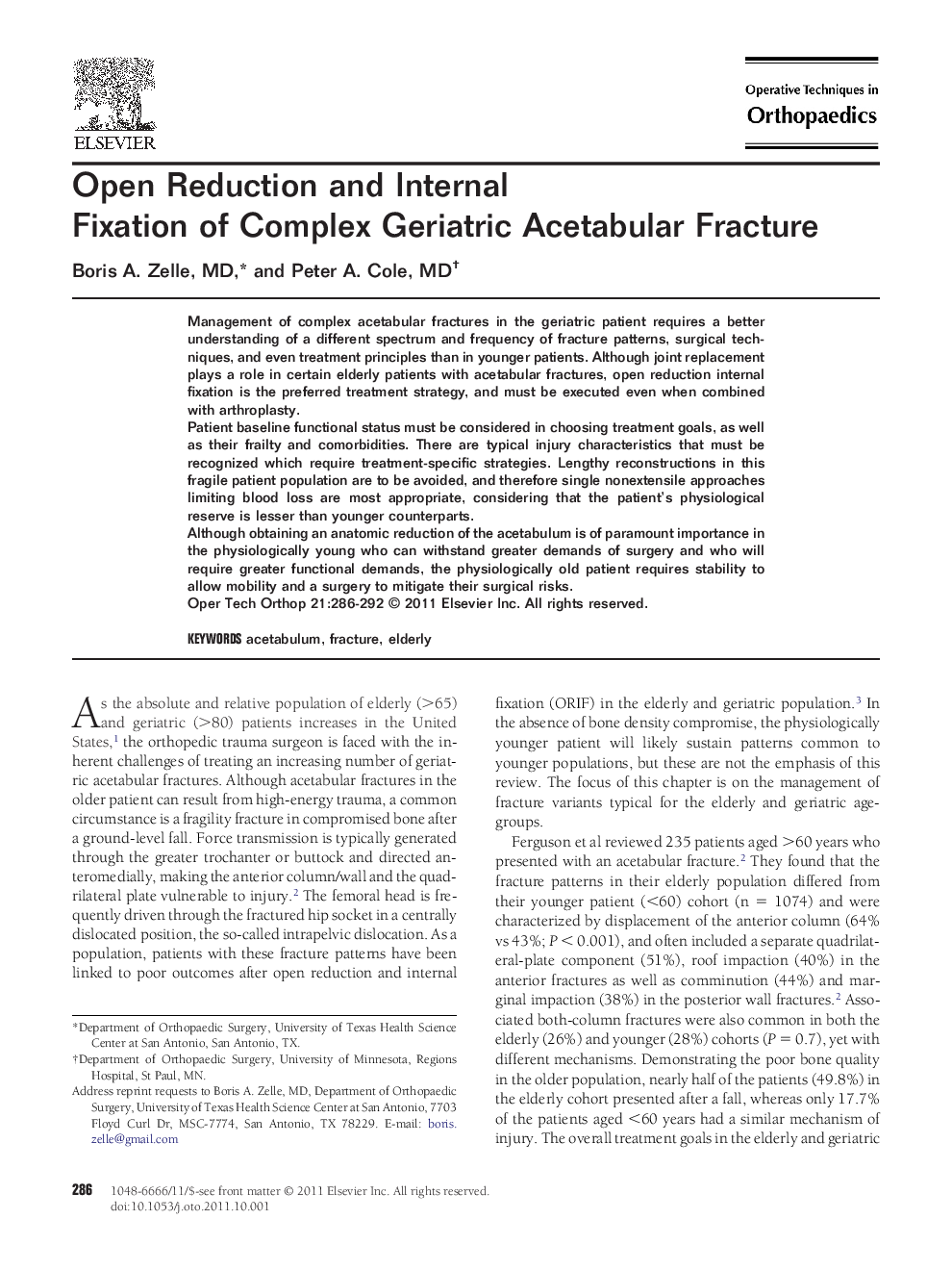| Article ID | Journal | Published Year | Pages | File Type |
|---|---|---|---|---|
| 4079043 | Operative Techniques in Orthopaedics | 2011 | 7 Pages |
Management of complex acetabular fractures in the geriatric patient requires a better understanding of a different spectrum and frequency of fracture patterns, surgical techniques, and even treatment principles than in younger patients. Although joint replacement plays a role in certain elderly patients with acetabular fractures, open reduction internal fixation is the preferred treatment strategy, and must be executed even when combined with arthroplasty.Patient baseline functional status must be considered in choosing treatment goals, as well as their frailty and comorbidities. There are typical injury characteristics that must be recognized which require treatment-specific strategies. Lengthy reconstructions in this fragile patient population are to be avoided, and therefore single nonextensile approaches limiting blood loss are most appropriate, considering that the patient's physiological reserve is lesser than younger counterparts.Although obtaining an anatomic reduction of the acetabulum is of paramount importance in the physiologically young who can withstand greater demands of surgery and who will require greater functional demands, the physiologically old patient requires stability to allow mobility and a surgery to mitigate their surgical risks.
